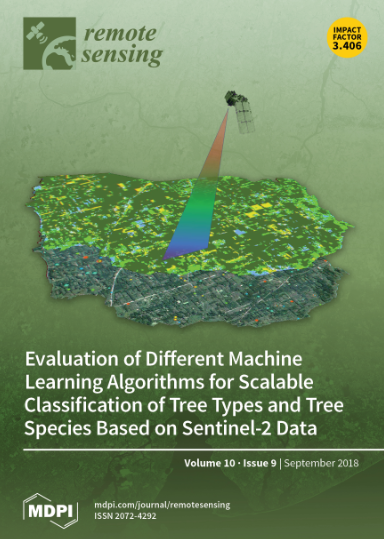使用三脚架和无人机安装的高光谱相机识别稀土元素:加利福尼亚州 Mountain Pass Birthday Stock 和 Sulphide Queen 矿坑案例研究
IF 4.2
2区 地球科学
Q2 ENVIRONMENTAL SCIENCES
引用次数: 0
摘要
随着 21 世纪的到来,对稀土元素(REEs)的需求不断增加,这就需要更强大的勘探方法。我们的研究小组正在利用高光谱遥感技术作为绘制稀土元素地图的工具。韧皮石矿物独特的光谱特征已被证明可有效地利用空间和机载数据探测稀土元素。在我们的研究中,我们在野外使用 Senop 高光谱相机,在实验室使用 SPECIM 高光谱相机收集高光谱数据。从加利福尼亚山口区收集的数据揭示了富含韧皮石的区域,并提供了岩石中韧皮石分布的详细情况。进一步的分析确定了富含韧皮石的特定岩粒。我们的研究结果表明,与碱性火成岩相比,碳酸盐岩中的巴斯纳石浓度更高。此外,来自硫化物皇后矿的岩石比来自生日霞石储量的岩石富含更多的巴斯奈石。研究结果得到了薄片研究和地球化学数据的验证,证实了不同高光谱数据模式的可靠性。这项研究证明了基于无人机的高光谱技术在增强传统矿物制图方法方面的潜力,并有助于采矿业就如何高效、有效地开采稀土元素做出明智的决策。本文章由计算机程序翻译,如有差异,请以英文原文为准。
Identifying Rare Earth Elements Using a Tripod and Drone-Mounted Hyperspectral Camera: A Case Study of the Mountain Pass Birthday Stock and Sulphide Queen Mine Pit, California
As the 21st century advances, the demand for rare earth elements (REEs) is rising, necessitating more robust exploration methods. Our research group is using hyperspectral remote sensing as a tool for mapping REEs. Unique spectral features of bastnaesite mineral, has proven effective for detection of REE with both spaceborne and airborne data. In our study, we collected hyperspectral data using a Senop hyperspectral camera in field and a SPECIM hyperspectral camera in the laboratory settings. Data gathered from California’s Mountain Pass district revealed bastnaesite-rich zones and provided detailed insights into bastnaesite distribution within rocks. Further analysis identified specific bastnaesite-rich rock grains. Our results indicated higher concentrations of bastnaesite in carbonatite rocks compared to alkaline igneous rocks. Additionally, rocks from the Sulphide Queen mine showed richer bastnaesite concentrations than those from the Birthday shonkinite stock. Results were validated with thin-section studies and geochemical data, confirming the reliability across different hyperspectral data modalities. This study demonstrates the potential of drone-based hyperspectral technology in augmenting conventional mineral mapping methods and aiding the mining industry in making informed decisions about mining REEs efficiently and effectively.
求助全文
通过发布文献求助,成功后即可免费获取论文全文。
去求助
来源期刊

Remote Sensing
REMOTE SENSING-
CiteScore
8.30
自引率
24.00%
发文量
5435
审稿时长
20.66 days
期刊介绍:
Remote Sensing (ISSN 2072-4292) publishes regular research papers, reviews, letters and communications covering all aspects of the remote sensing process, from instrument design and signal processing to the retrieval of geophysical parameters and their application in geosciences. Our aim is to encourage scientists to publish experimental, theoretical and computational results in as much detail as possible so that results can be easily reproduced. There is no restriction on the length of the papers. The full experimental details must be provided so that the results can be reproduced.
 求助内容:
求助内容: 应助结果提醒方式:
应助结果提醒方式:


